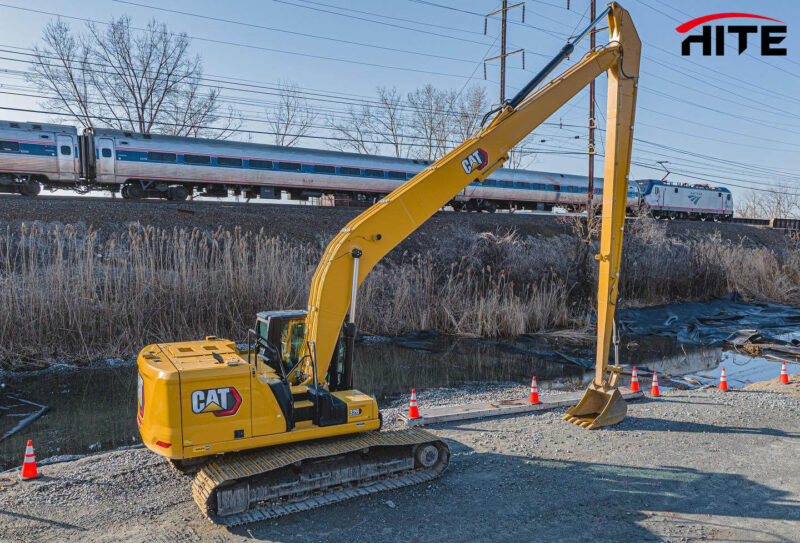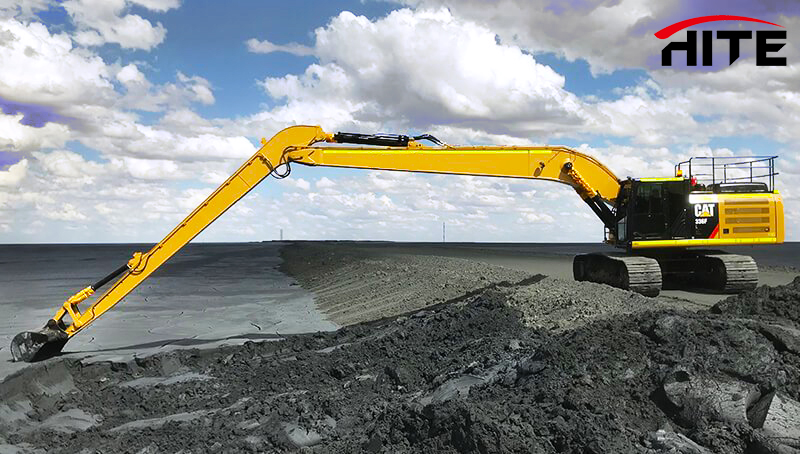Hydraulic cylinders are crucial for the operation of excavator long reach fronts, enabling them to perform heavy lifting and digging tasks with precision and efficiency. However, these cylinders can fail due to various reasons, leading to downtime and costly repairs. This blog post explores the common causes of hydraulic cylinder failures in excavators, provides detailed examples of different failures, and outlines practical solutions to these problems.
Understanding Excavator Long Reach Fronts Hydraulic Cylinder Failure
Hydraulic cylinder failure in excavator long reach fronts can manifest in several ways, including leaks, loss of power, and abnormal noises. Understanding these failures requires a basic knowledge of the cylinder’s components: the barrel, piston, piston rod, and seals. Failure in any of these components can impair the entire cylinder’s functionality.
Common Causes of Excavator Long Reach Fronts Hydraulic Cylinder Failures
Seal Leakage
One of the most common issues with hydraulic cylinders is seal leakage. This can occur due to normal wear and tear, improper installation, or exposure to extreme temperatures and contaminants. For instance, an excavator operating in a high-temperature environment might experience accelerated seal degradation, leading to leaks and a loss of hydraulic pressure.
Rod Bending or Breaking
Rod bending or breakage is typically caused by excessive loads or misalignment. For example, if an excavator’s long reach front is subjected to a load that exceeds its design specifications, the rod may bend or even snap. This can be exacerbated by improper operation techniques or failure to adhere to load limits.
Cylinder Bore Wear
Over time, the cylinder bore can wear out due to friction, contamination, or inadequate lubrication. A worn bore can cause the piston to move unevenly, leading to inefficiencies and eventual failure. An example of this could be seen in an excavator used in a mining operation where abrasive particles are prevalent.
Solving Excavator Long Reach Fronts Hydraulic Cylinder Problems
Regular Maintenance and Inspection
The first step in preventing and solving hydraulic cylinder problems is regular maintenance and inspection. This includes checking for leaks, monitoring cylinder performance, and replacing worn or damaged parts promptly. By keeping a maintenance log, operators can track the cylinder’s condition and predict potential failures.
Proper Installation and Alignment
Ensuring that hydraulic cylinders are correctly installed and aligned can prevent many issues, such as rod bending and uneven wear. Use manufacturer-recommended procedures and tools for installation, and regularly check for any alignment issues, especially after performing repairs or replacing parts.
Using the Right Fluids and Filters
Hydraulic fluid quality directly impacts cylinder performance. Using the correct fluid and regularly replacing filters can prevent contaminants from causing wear and tear on cylinder components. For instance, in a scenario where an excavator operates in a dusty environment, more frequent filter changes can prevent dirt particles from entering the hydraulic system.
Case Study: Solving Cylinder Failure Due to Contamination
Consider the case of a construction company facing frequent hydraulic cylinder failures in their fleet of excavators. Investigation revealed that the failures were primarily due to hydraulic fluid contamination. The company implemented a strict fluid management protocol, which included using high-quality fluids, regular fluid analysis, and timely filter replacements. As a result, the frequency of cylinder failures significantly decreased, enhancing the excavators’ reliability and reducing downtime.
Expert Tips for Long-Term Cylinder Health
- Train Operators: Proper training for operators on the correct use of excavator long reach fronts can prevent overloading and misuse, which often lead to hydraulic cylinder failures.
- Implement a Condition Monitoring System: Advanced systems can predict failures by continuously monitoring the cylinder’s operational parameters. This allows for preemptive maintenance before a complete failure occurs.
- Choose Quality Replacement Parts: When repairs are necessary, use high-quality, OEM-approved parts to ensure compatibility and reliability.
FAQs on Excavator Long Reach Fronts Hydraulic Cylinder Maintenance
How often should hydraulic cylinder seals be replaced?
Seal replacement frequency depends on usage intensity and operating conditions, but a general rule is to inspect seals annually and replace them as needed.
What is the best way to diagnose a hydraulic cylinder failure?
Start with a visual inspection for leaks and damage. For more complex issues, hydraulic pressure tests and system diagnostics may be necessary.
Can Excavator Long Reach Fronts hydraulic cylinders be repaired, or should they be replaced?
Many hydraulic cylinder issues can be repaired, especially if they are identified early. However, in cases of severe damage, replacement might be more cost-effective.
Conclusion
Understanding and addressing the causes of hydraulic cylinder failure in excavator long reach fronts is key to maintaining operational efficiency and minimizing downtime. By implementing regular maintenance schedules, using the correct installation techniques, and choosing quality fluids and parts, operators can significantly extend the life of hydraulic cylinders.







Leave A Comment